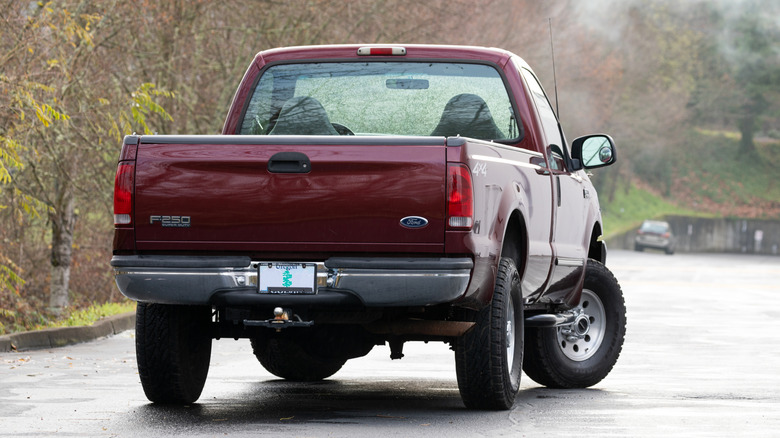Why Ford Dropped Navistar For The Power Stroke Diesel Engine
In the American automotive industry, the Ford-Navistar breakup, which led to the two companies parting ways in 2009, is a notable example of a great partnership turned sour. What had started as a match for the ages, resulting in the beloved Power Stroke engine, eventually soured, prompting Ford to take Navistar to court.
It all began in 1982, when Navistar International (International Truck and Engine Corporation) signed on to produce diesel engines for Ford. Navistar was already an old company by then, with a history that reached all the way to 1831. The company had experience making engines, and after entering into the Ford partnership, presented the first engine designed to power the vehicle maker's light trucks.
This engine was introduced just a year after the collaboration began, and as you might expect, it kick-started several years of strong business between the two companies. However, it wasn't long before Navistar's engines, like the 6.0 Power Stroke, started showing reliability issues; problems too significant for Ford to ignore. The two companies ended up in court, and the issues to be settled soon expanded beyond just engine reliability problems.
The 7.3 Power Stroke made everyone proud
While the 2000s gave us some of the most reliable vehicles ever made, this decade also had its fair share of troubles; including the Financial Crisis, which brought many companies around the world into financial turmoil. For Ford and Navistar, the 2000s had opened with the 7.3-liter turbo diesel, which the automaker had introduced in 1994 as the first engine to bear the Power Stroke name.
To say that the 7.3 Power Stroke was a good and equally innovative engine would be an understatement. The modern engine featured direct injection and a hydraulic electronic unit injection system, both of which catapulted the 7.3 into becoming one of the most potent and emissions-compliant engines upon its release. The 7.3 reigned through the turn of the century, only to be met with competition from other engines such as the Cummins 5.9-liter, and stricter emissions regulations, which prompted Ford and Navistar to consider bringing in a replacement.
For years, the two companies had been working on a new engine, one that could build on what the 7.3 Power Stroke had achieved. In 2003, Ford introduced the 6.0 Power Stroke, an engine that (on paper) was capable of making its older 7.3 sibling proud.
The damage caused by the 6.0 was too severe to ignore
Despite offering more power at 325 horsepower, the 6.0 Power Stroke came with issues ranging from oil cooler, high-pressure oil pump, EGR problems, to head gasket and turbo issues. As is only natural, these issues led to massive recalls and repairs, all of which cost Ford an alleged $1 billion. In 2007, Navistar introduced the 350-horsepower 6.4-liter Power Stroke to replace the 6.0-liter engine. However, the damage was already done.
Ford took Navistar to court in 2007, citing the fact that the engine maker had failed to help cover warranty costs for the recalled 6.0. More than that, Ford also noted that Navistar had increased engine prices, which violated the terms the two companies had agreed upon. Of course, Navistar insisted that its prices were in line with what the two had agreed upon when drafting the contract.
What happened next was a rollercoaster of events that would not only result in the two companies parting ways, but also in Ford producing its own 6.7 Scorpion engine from 2010. First, Ford reduced the sum it was paying Navistar to recover the losses it had incurred with the 6.0 Power Stroke. On the other hand, Navistar paused all engine production for the vehicle maker, and subsequently sued Ford for having plans for a new 4.4-liter engine. In 2009, the two parties settled, with Ford paying Navistar a predetermined amount before each company went separate ways.


